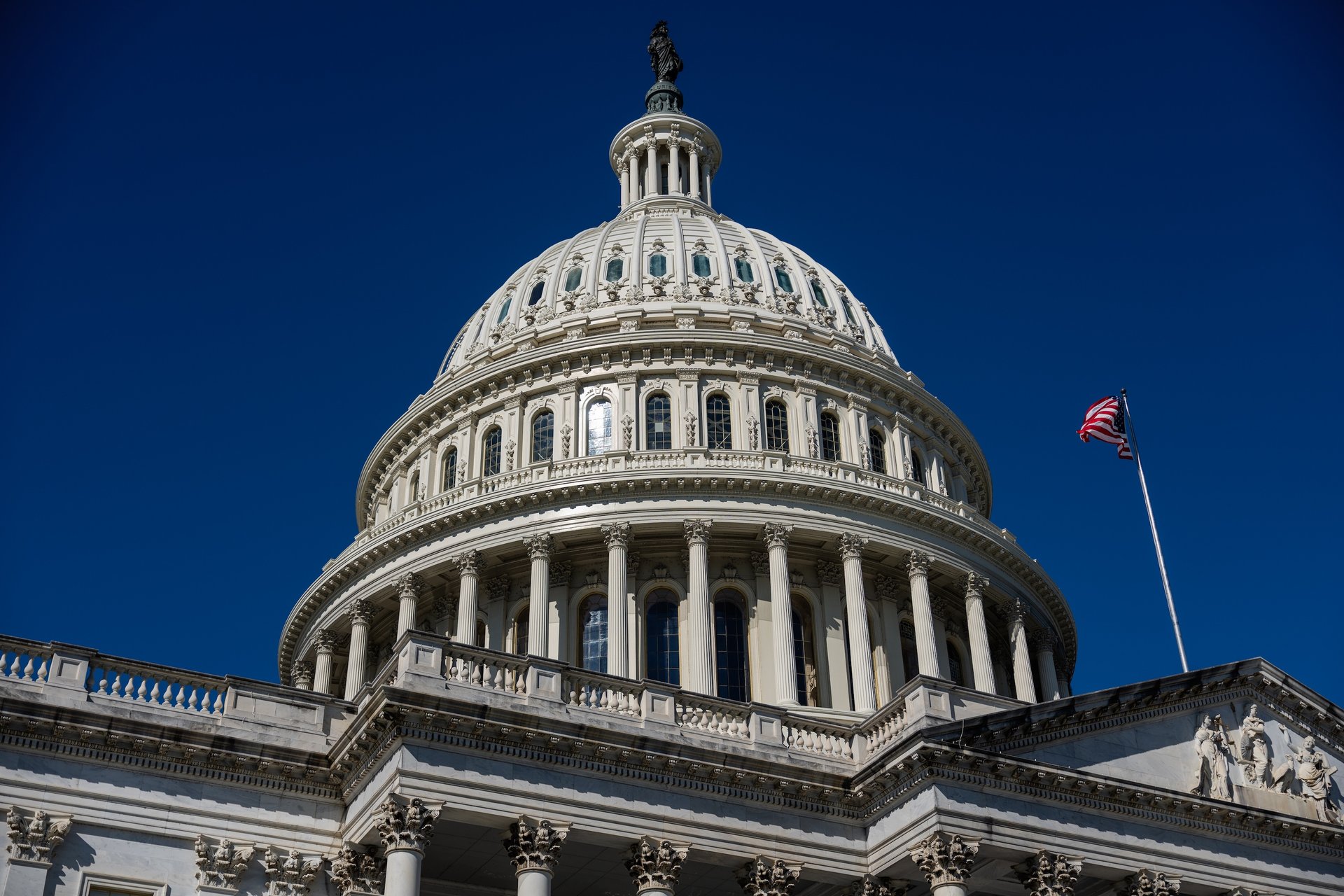There's a deal to end the government shutdown. Here’s what that means
The deal would reopen the government, but the shutdown will stretch for several more days as the agreement endures a perilous voyage out of Congress

Eric Lee/Bloomberg via Getty Images
A deal was struck on Sunday to reopen the federal government following a flurry of negotiations led by a group of centrist Democratic senators to end the longest shutdown in American history.
Suggested Reading
The shutdown started on Oct. 1 and has stretched into its 40th day. The 31-page deal would:
Related Content
- Reopen the federal government until Jan. 30
- Set up a vote on extending Affordable Care Act tax credits sometime in December
- Reverse federal firings carried out during the shutdown
- Guarantee backpay for furloughed federal employees
- Fund food stamps through the 2026 fiscal year
For more than a month, most Democratic senators refused to supply their votes on a short-term funding bill unless President Donald Trump agreed to renew ACA subsidies that are sunsetting at year's end. President Donald Trump and Republicans opposed negotiating on the healthcare tax credits while the government was closed since they viewed it as a form of "hostage-taking."
Senate Republicans had set up 15 votes throughout October on the same short-term funding bill in an attempt to force Democrats to crack, only for most Democratic senators to keep banding together in opposition. Both parties pointed fingers at the other for bearing responsibility. Public opinion surveys so far showed Americans had placed the bulk of the blame on Republicans for the shutdown.
Now comes the tough part for the deal: reaching the White House. It faces a bumpy voyage and will undergo several procedural votes ahead of final passage in the Senate. Ultimately, the deal doesn't renew ACA subsidies, the main demand from Democrats.
The shutdown won't end right away either. It's poised to continue for several more days since there isn't likely to be unanimous support among every senator to fast-track the spending deal.
Progressives in both chambers are already blasting the agreement for failing to renew the ACA subsidies. And it must also pass the House — which has been out of session for almost two months — before reaching Trump for his signature. Plenty of Democrats believed last week's victories for their party in the New Jersey and Virginia governor's races was a message from voters to keep fighting on.
“I think it’s a terrible mistake,” Democratic Sen. Elizabeth Warren of Massachusetts told reporters on Sunday evening. “People want us to stand and fight for health care, and that's what I believe.”
The reception among Democrats was chilly in the lower chamber as well. House Minority Leader Hakeem Jeffries issued a statement heavily criticizing the Senate deal, saying it "must decisively address the Republican healthcare crisis."
The toll of the shutdown
More than 700,000 federal employees were furloughed during the shutdown, which raised fears among economists of a sparking a recession the longer it dragged down. Since federal funding had dried up for agencies like the Bureau of Labor Statistics, data releases such as the monthly jobs and inflation reports had paused for the time being.
The BLS is expected to release the September employment report once the deal is law and funding is restored. But the lack of staff through October will likely mean delays in future data releases and cast a fog over economic decision-making among businesses and the Federal Reserve.
The Trump administration had also taken extraordinary steps to downsize the federal government during the shutdown. White House Budget Director Russ Vought paused a handful of infrastructure projects in Democratic-led cities to punish Democratic lawmakers for their resistance to the funding legislation. The White House had carried out mass layoffs of federal employees as well.
